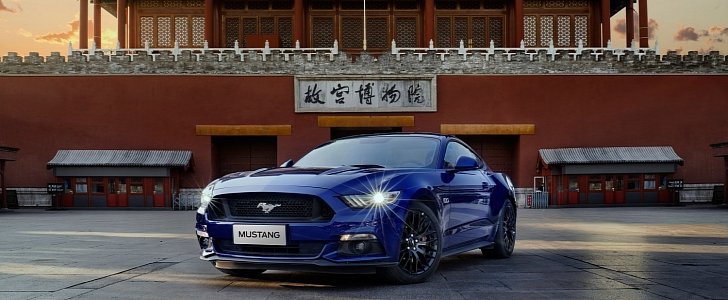Ford’s engineering team in Nanjing has managed to implement a Chinese language pack for the SYNC 3 multimedia unit.
The breakthrough involves recognizing written Chinese inputted with the swipe of a finger, which can be done by either driver (while the car is still), or the passenger, when the vehicle is in motion.
Ford placed the Mustang at the forefront of this new capability, but other cars offered by the Blue Oval will also benefit from the technology, including the Focus, Edge, Kuga, Explorer, and Taurus Limited Edition.
It may not seem that hard to implement a new language pack into an automobile, but Ford has explained what makes written Chinese so complicated. Previous systems that did this required users to use pinyin, which is the phonetic spellings of Chinese words using the alphabet.
From there, users had to select one of the multiple characters, all of which have similar pronunciations.
You can understand that this takes more time than using another language, so Ford wanted to change that. Moreover, pinyin is hard for some people, especially elder users, Ford says.
The Blue Oval’s engineering team managed to implement a system that understands each stroke of the character as it is being made on the touchscreen. It is turned into a typeface, and over 2,500 commonly used characters in Chinese are already integrated.
SYNC 3 understands a range of different writing habits and styles, and this is done to comprehend what the user is attempting to write.
According to Ford, the screen understands inputs written at angles of up to 15 degrees from horizontal. Moreover, voice controls know Mandarin Chinese, and the entire setup has been adapted to work with the Chinese way of taking directions.
The SYNC Supervisor for Ford Asia Pacific, Fisher Xu, has explained that people in China provide instructions using points of interest and building names, instead of regular street numbers.
The system is different from other places in the world, which caused difficulties for this category of users. That is why SYNC 3 has been adapted to understand this local preference in a seamless way.
Ford placed the Mustang at the forefront of this new capability, but other cars offered by the Blue Oval will also benefit from the technology, including the Focus, Edge, Kuga, Explorer, and Taurus Limited Edition.
It may not seem that hard to implement a new language pack into an automobile, but Ford has explained what makes written Chinese so complicated. Previous systems that did this required users to use pinyin, which is the phonetic spellings of Chinese words using the alphabet.
From there, users had to select one of the multiple characters, all of which have similar pronunciations.
You can understand that this takes more time than using another language, so Ford wanted to change that. Moreover, pinyin is hard for some people, especially elder users, Ford says.
The Blue Oval’s engineering team managed to implement a system that understands each stroke of the character as it is being made on the touchscreen. It is turned into a typeface, and over 2,500 commonly used characters in Chinese are already integrated.
SYNC 3 understands a range of different writing habits and styles, and this is done to comprehend what the user is attempting to write.
According to Ford, the screen understands inputs written at angles of up to 15 degrees from horizontal. Moreover, voice controls know Mandarin Chinese, and the entire setup has been adapted to work with the Chinese way of taking directions.
The SYNC Supervisor for Ford Asia Pacific, Fisher Xu, has explained that people in China provide instructions using points of interest and building names, instead of regular street numbers.
The system is different from other places in the world, which caused difficulties for this category of users. That is why SYNC 3 has been adapted to understand this local preference in a seamless way.





